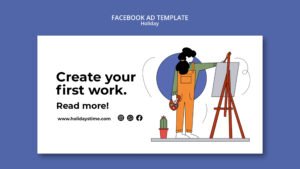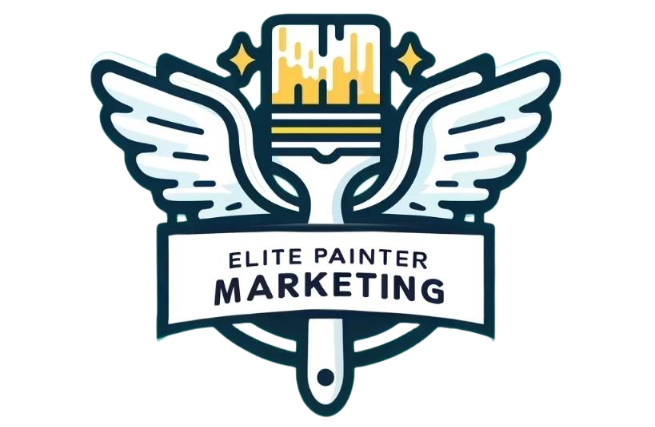Introduction

In the competitive world of painting contractors, standing out and consistently generating quality leads is essential for success. While traditional marketing methods still have their place, the digital landscape offers unparalleled opportunities to connect with potential customers. Among the various online platforms, Facebook Ads is a powerhouse that, when used correctly, can significantly increase your lead flow. In this comprehensive guide, we’ll dive into everything you need to know about Facebook Ads for painters, from setting up your campaigns to optimizing them for maximum results.
Why Facebook Ads for Painters?
Facebook is not just a social media platform; it’s a robust advertising machine with over 2.9 billion active users. Whether you’re targeting homeowners, property managers, or businesses, Facebook’s sophisticated targeting options allow you to reach your ideal audience with precision. Here’s why Facebook Ads are particularly effective for painters:
- Highly Targeted Advertising: Reach specific demographics such as age, location, income level, and even interests like home improvement.
- Cost-Effective: Compared to traditional advertising methods, Facebook Ads offer a lower cost per lead, especially when campaigns are optimized.
- Measurable Results: Track every aspect of your campaign, from impressions to conversions, making it easy to calculate your return on investment (ROI).
Step 1: Understanding Your Target Audience

Before launching any Facebook ad campaign, it’s crucial to have a clear understanding of your target audience. Here’s how to define your ideal customer:
- Demographics: Identify the age range, gender, income level, and location of your potential customers.
- Interests and Behaviors: What are your customers interested in? Are they likely to be homeowners, DIY enthusiasts, or property managers? Facebook allows you to target users based on their interests and online behaviors.
- Pain Points: What problems do your potential customers need solving? Whether it’s the need for a fresh coat of paint or tackling a challenging exterior job, understanding their pain points will help you craft compelling ad copy.
Tip: Use Facebook Audience Insights to gather data on your target audience and refine your targeting.
Step 2: Setting Up Your Facebook Ad Campaign

Now that you have a clear picture of your target audience, it’s time to set up your Facebook ad campaign. Follow these steps:
1. Choose Your Campaign Objective
Facebook offers several campaign objectives, but for lead generation, the following are most effective:
- Lead Generation: Ideal for capturing contact information directly through Facebook.
- Traffic: Directs users to a landing page or your website.
- Conversions: Tracks actions like form submissions or calls on your website.
Tip: If you’re new to Facebook Ads, start with the Lead Generation objective as it simplifies the process of collecting leads.
2. Set Your Budget and Schedule
Decide how much you want to spend on your campaign and whether you want it to run continuously or within a specific timeframe. Facebook allows you to set either a daily or lifetime budget.
- Daily Budget: The amount you’re willing to spend each day.
- Lifetime Budget: The total amount you’re willing to spend over the course of your campaign.
Tip: Start with a small budget and gradually increase it as you gather data and optimize your ads.
3. Define Your Audience
Use the targeting options to specify your audience. You can target users based on:
- Location: Target users in specific cities, ZIP codes, or within a certain radius of your business.
- Demographics: Age, gender, income level, and more.
- Interests: Home improvement, DIY, real estate, etc.
- Behaviors: Homeowners, recent movers, and other relevant behaviors.
Tip: Use the “Narrow Audience” feature to combine multiple targeting criteria for a more refined audience.
4. Choose Your Ad Placements
Facebook offers various placements, including the news feed, stories, and the Audience Network. For painters, the Facebook and Instagram news feeds typically yield the best results.
Tip: Stick with automatic placements if you’re unsure, as Facebook will optimize your ads for the best performance.
Step 3: Crafting Compelling Ad Creative

Your ad creative is what captures attention and drives action. It includes your ad copy, images or videos, and your call-to-action (CTA). Here’s how to create ad creative that resonates with your audience:
1. Headline and Ad Copy
Your headline and ad copy should be clear, concise, and compelling. Focus on the benefits of your painting services and how they solve the customer’s pain points.
- Headline Example: “Transform Your Home with a Professional Paint Job”
- Ad Copy Example: “Looking for a fresh, new look for your home? Our team of expert painters will bring your vision to life. Get a free quote today!”
Tip: Use power words like “transform,” “expert,” and “free” to grab attention.
2. Visuals: Images and Videos
Visuals play a crucial role in the success of your ads. High-quality images or videos of your past projects can showcase your work and build trust with potential customers.
- Image Example: Before-and-after photos of a painted home.
- Video Example: A short video showing the painting process and the final result.
Tip: Ensure your visuals are bright, high-resolution, and relevant to your ad copy.
3. Call-to-Action (CTA)
Your CTA should clearly tell users what you want them to do next. Common CTAs for painters include:
- “Get a Free Quote”
- “Schedule a Consultation”
- “Call Now”
Tip: Make your CTA stand out by using a contrasting color or bold font.
Step 4: Launching and Monitoring Your Campaign
Once your campaign is set up and your ad creative is ready, it’s time to launch. But the work doesn’t stop there. Monitoring and optimizing your campaign is crucial for maximizing results.
1. Monitor Key Metrics
Keep an eye on the following metrics to gauge your campaign’s performance:
- Click-Through Rate (CTR): Measures how many people clicked on your ad. A higher CTR indicates your ad is engaging.
- Cost Per Lead (CPL): The amount you’re paying for each lead. A lower CPL is ideal.
- Conversion Rate: The percentage of users who took the desired action (e.g., filling out a form).
Tip: Use Facebook’s Ads Manager to track these metrics in real-time.
2. A/B Testing
A/B testing involves running multiple versions of your ad to see which performs best. You can test different headlines, ad copy, images, and CTAs.
Tip: Test one element at a time to understand what drives better results.
3. Optimize Your Campaign
Based on your campaign’s performance, make adjustments to improve results. For example:
- If your CTR is low, try changing your headline or visual.
- If your CPL is high, refine your targeting or adjust your budget.
Tip: Use Facebook’s automated rules to optimize your campaign without constant manual intervention.
Step 5: Scaling Your Campaign
Once you’ve found a winning formula, it’s time to scale your campaign. Here’s how:
- Increase Your Budget: Gradually increase your budget to reach more people.
- Expand Your Audience: Use Facebook’s lookalike audiences to find new potential customers similar to your existing leads.
- Leverage Retargeting: Show ads to users who have interacted with your previous ads or visited your website.
Tip: Keep testing and optimizing even as you scale to ensure continued success.
Conclusion
Facebook Ads offer a powerful platform for painters to generate quality leads and grow their business. By understanding your audience, crafting compelling ads, and continually optimizing your campaigns, you can achieve impressive results. Whether you’re just starting or looking to take your advertising to the next level, following the steps outlined in this guide will set you on the path to success.
If you’re ready to supercharge your lead generation and take the guesswork out of Facebook Ads, consider partnering with an expert. At Elite Painter Marketing, we specialize in helping painting contractors like you dominate their local markets through tailored digital marketing strategies. Let us handle your Facebook Ads so you can focus on what you do best—transforming spaces with your paintbrush. Contact us today to learn more!
